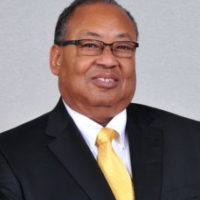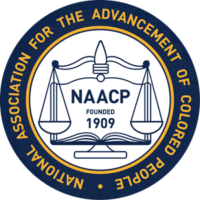NAACP -On The Road To Change Part 1 – Civil Rights Organization Evolving To Tackle Modern Challenges
Share
Explore Our Galleries
Breaking News!
Today's news and culture by Black and other reporters in the Black and mainstream media.
Ways to Support ABHM?
By: HOUSTON aframnews.com
HOUSTON- As African-Americans face evolving issues that are reshaping our community and futures, the National Association for the Advancement of Colored People (NAACP) contends it is still relevant, evolving and up to the task to take on the modern struggles.
But in an era when activists quickly organize and mobilize mass demonstrations using social media, the NAACP finds itself struggling to remain on the cutting edge of the social justice movement….

NAACP Interim President & CEO
The NAACP,, named vice chairman of the board of directors Derrick Johnson as interim president and CEO.
Johnson, new interim president and CEO of the NAACP, wasted no time stating his plans and desires for the organization.
“There’s a lot of work that needs to be done and we won’t waste any time getting to it,” he said. “We are facing unprecedented threats to our democracy and we will not be sidelined while our rights are being eroded every day. We remain steadfast and immovable, and stand ready on the front lines of the fight for justice….”
Johnson, Russell and other leaders are going on the road nationwide on a listening tour that will allow opportunities to talk to its local members and figure out what the future of the nation’s oldest civil rights organization should be, he said….

Leon Russell, NAACP National Board Chairman
The group is struggling to figure our how to better respond to the new realities confronting African-Americans without abandoning the principles that made it one of the nation’s leading forces for social change….
The base mission of the National Association for the Advancement of Colored People (NAACP) is to ensure the political, educational, social, and economic equality of rights of all persons and to eliminate race-based discrimination….
“The modern challenge and question is how do we achieve our goals and objectives and get there collectively,” said Dr. James M. Douglas, president of NAACP Houston Branch. “With many of us spread out and living in many places, there is little cohesion or common ground among us – that is one of the main things we will have to address….”
Douglas said the residential spread has created a whole new set of issues on top of what already exists on the table….

Credit: NAACP.org
The NAACP was formed partly in response to the continuing horrific practice of lynching and the 1908 race riot in Springfield, the capital of Illinois and resting place of President Abraham Lincoln.
Appalled at the violence that was committed against blacks, a group of white liberals that included Mary White Ovington and Oswald Garrison Villard, both the descendants of abolitionists, William English Walling and Dr. Henry Moscowitz issued a call for a meeting to discuss racial justice….
The NAACP’s principal objective is to ensure the political, educational, social and economic equality of minority group citizens of United States and eliminate race prejudice. The NAACP seeks to remove all barriers of racial discrimination through the democratic processes.
The NAACP established its national office in New York City in 1910 and named a board of directors as well as a president, Moorfield Storey, a white constitutional lawyer and former president of the American Bar Association. The only African American among the organization’s executives, Du Bois was made director of publications and research and in 1910 established the official journal of the NAACP, The Crisis….
Although it was criticized for working exclusively within the system by pursuing legislative and judicial solutions, the NAACP did provide legal representation and aid to members of other protest groups over a sustained period of time. The NAACP even posted bail for hundreds of Freedom Riders in the ‘60s who had traveled to Mississippi to register black voters and challenge Jim Crow policies….

Credit: Library of Congress- Jim Crow Laws
In 2011, the NAACP launched a process to develop its strategic direction and plan, creating a powerful vision for the future, and setting organizational goals that would focus its work for the 21st Century.
It appears to work to rejuventate the base around key focus issues while rallying a new generation of younger members to help engage and prepare the organization to face future challenges…
The true movement lies in the faces–the diverse multiracial army of ordinary women and men from every walk of life, race and class–united to awaken the consciousness of a people and a nation. The NAACP will remain vigilant in its mission….
“These problems are not going to be solved overnight,” Douglas said. “It will be a teaching process as we evolve, but the goal is for every person old and young to understand and know the issues before them and get in the fight and stay until justice is truly secured for all.”
Read full article here.
Read more Breaking News here.
Read more about NAACP here.
Read more about Jim Crow Laws here.









Comments Are Welcome
Note: We moderate submissions in order to create a space for meaningful dialogue, a space where museum visitors – adults and youth –– can exchange informed, thoughtful, and relevant comments that add value to our exhibits.
Racial slurs, personal attacks, obscenity, profanity, and SHOUTING do not meet the above standard. Such comments are posted in the exhibit Hateful Speech. Commercial promotions, impersonations, and incoherent comments likewise fail to meet our goals, so will not be posted. Submissions longer than 120 words will be shortened.
See our full Comments Policy here.